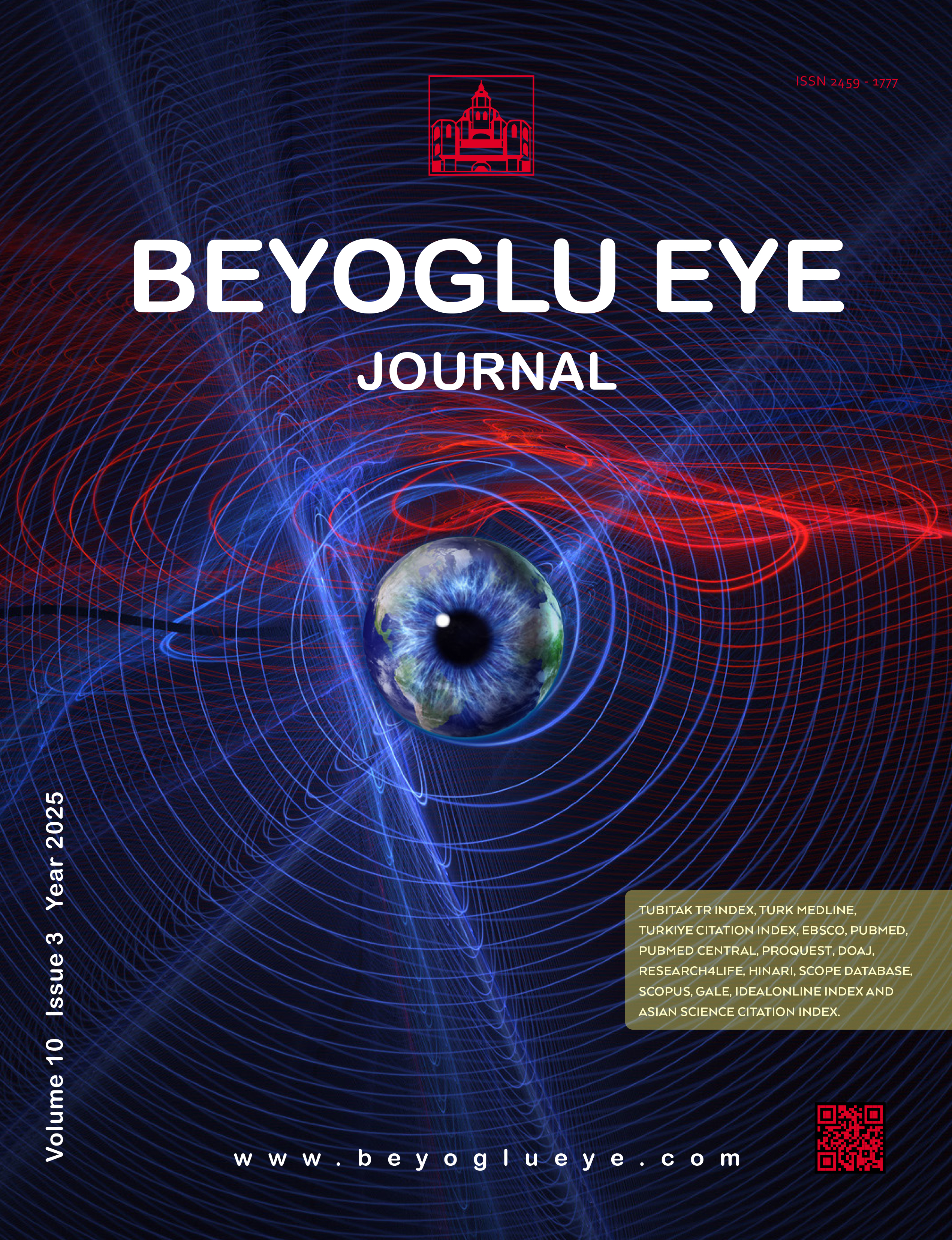
A Comprehensive Evaluation of Serum Iron Status Indicators in Patients with Age-Related Macular Degeneration
Ecem Onder Tokuc1, Sevim Ayca Seyyar2, Ece Basaran1, Sumeyra Nur Ozdemir1, Levent Karabas11Department of Ophthalmology, Kocaeli University Faculty of Medicine, Kocaeli, Türkiye2Department of Ophthalmology, Gaziantep University Faculty of Medicine, Gaziantep, Türkiye
OBJECTIVES: Iron is recognized as a significant contributor to oxidative damage, and its levels tend to rise with age, poten-tially worsening age-related diseases. The aim of this study was to investigate the role of serum iron metabolism markers in the pathogenesis of age-related macular degeneration (AMD).
METHODS: The files of all AMD patients in Kocaeli University School of Medicine between January 2017 and March 2020 were reviewed retrospectively. By examining the files of AMD patients who applied to the eye outpatient clinic on the same dates, those dry AMD (dAMD) and neovascular AMD (nAMD) were recorded. As a control group, the records of patients without any AMD findings were obtained from the files of all patients who visited the clinic during the same time period. All records were recorded for analysis, including a comprehensive ophthalmological examination, laboratory data of fasting blood tests, and an internal medicine outpatient examination.
RESULTS: Of the 164 participants, 50 were dAMD patients, 51 were nAMD patients, and 63 were patients non-AMD (con-trol group). There was a significant difference between the groups mean corpuscular volume (MCV), serum ferritin, and total iron-binding capacity (TIBC) (p<0.050). It was observed that the ferritin of those with AMD was significantly higher than the control group, whereas MCV and TIBC were found to be significantly lower (p<0.050). There was no significant difference in serum iron marker levels between nAMD and dAMD patients (p>0.05).
DISCUSSION AND CONCLUSION: Assessing serum iron status indicators during the routine monitoring of AMD may provide insights into the associated risk profile of the condition.
Keywords: Age-related macular degeneration, serum ferritin levels, serum iron status
Manuscript Language: English









